Discussion Topic: Does the Title of the New NBC Improv Show, Thank God You're Here, Take the Lord's Name in Vain?

Here are a few thoughts I have on this kind of subject, and I would appreciate your discussion in the comments.
(1) Contrary to what is often taught from pulpits, the command "You shall not misuse the name of the LORD your God, for the LORD will not hold anyone guiltless who misuses his name" (Ex 20:7 TNIV), is about more than mere swearing. What does it mean to misuse the Lord's name? Well, the Hebrew word, נָסָא/nasah, translated as "misuse" in the NIV/TNIV/NLT or "take...in vain" in many Tyndale tradition translations is often defined as to lift, carry, take. This is a word that implies action. I once heard it described as having the imagery of carrying a banner or flag into battle--it denotes belonging, allegiance. To carry the name of the Lord in vain can even mean to claim that one belongs to the God of the Bible and then live as if that were not true. So certainly the commandment is against more than simply referring to God without any real intent of meaning, but it would also include this as well.
(2) The use of the term "God" with meaningless intent is (sadly) part of common speech, often even among Christians. Personally, I believe I am standing on solid biblical ground in suggesting that believers should not use it as such. The counter claim could be made that "God" is not actually God's name. This is true, but "God" is used interchangeably not only in our speech, but even in the Bible with the divine name. Certain religious Jews will not even write the generic word, but will offer something such as "G-d."
(3) I can't imagine that this title would have been used in a television show a generation ago. I can still remember hearing the word "God" beeped out of discussions on television many years ago.
(4) What is the proper Christian response toward culture? Granted, we cannot expect non-believers to act or speak like believers. Do we even have any business questioning what television networks choose to call a show? Well, I think we do because I'm certain that NBC would want as many people as possible to watch. NBC doesn't look at this as a show aimed at non-Christians, but a show aimed at as many viewers as will tune in. Therefore, Christians, too, are part of the target audience. There may be a need at least to call the network into question regarding the name of the show. I don't really think they will change it, as it is an American version of an overseas show by the same name. But it might be a good idea to call their attention to such things, that in my opinion, are offensive--even if they don't understand why.
These are my thoughts. I'm not calling for a boycott or anything of that nature. I am asking for feedback to know what you think. Am I making a big deal out of nothing? Should, at the very least, concerned Christians (and religious Jews) make their concerns known to NBC?
Let me know what you think.
August Konkel Responds to Readers' Comments
After some questions were asked about the excerpt from the CBC commentary that I included in my post, I emailed Dr. Konkel to see if he would like to respond. Here are his comments that he sent me this morning:
Regarding the corrected translation in the commentary to Job 16:20:
Why would I give a translation I disagree with? Your reader needs to be
a little more familiar with the process of the NLT and its commentaries.
Editing teams reviewed and made stylistically consistent the entire
translation. The NEB would be an example of a similar process when it
was produced. Further, the editing teams worked with two or three
original translations, as is evident if one looks at the introduction of
the NLT. The commentary did not need to agree with the editor's final
decisions. Perhaps I should have done more to explain the reasons for
their decisions.
Regarding concern over Konkel's translation of vv. 20-21:
A more literal rendering of verse 21: "So that He might judge a man in
controversy with God as fairly as he would judge between one man in a
suit with his fellow" (following the BHS footnote in the second half of
the line).
The vav on the hiphil introduces the conclusion of the plea implicit in
v. 20 b.
I did not discuss all the possible interpretations of v. 20, of which
there are many. But a reference to mockers is most disruptive (see
Clines and Gordis). In Job God is both adversary and redeemer. That is
the nature of faith as portrayed by the author. We do not understand
God; we just trust him. In v.20 Job's advocate is God, whom he knows to
be his friend, though he cannot understand how this friend is dealing
with him.
My thanks to Dr. Konkel for responding to these questions. He also stated in his email that he welcomes further discussion.
TNIV Truth: NIV vs. TNIV: Matthew 11:12
The Bible Version Cage Match: Round Two (NLT vs. CEV: Job 16:18-22)
Pre-Fight Commentary
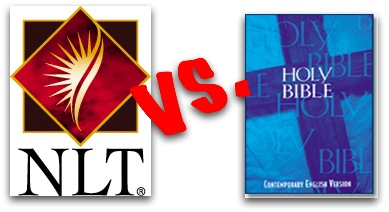
This post is the second in a series suggested a few weeks ago by Lingamish (a.k.a David Ker) to compare the New Living Translation (NLT) to the Contemporary English Version (CEV). Why these two versions? Well, it seems that back in February, Bible translator and blogger Wayne Leman ran some tests on 14 different English translations of the BIble. The goal was to determine which translations best represented current standard English. Only two translations scored in the top ten percentile: the NLT and CEV with scores of 90% and 94%, respectively (which is really, really good if you care to look at how some of the other translations scored).
These kinds of tests are extremely significant because how well a translation represents standard English can determine how well it connects with a reader. Now, I read from multiple translations in comparison with the original languages when I study a passage on my own. But I'm very picky about what translation I use to read aloud in public. And sometimes I will use different ones based on different audiences as well as whether I am teaching (which is more interactive with my audience) or preaching (which is more passive for my audience).
This is a big change for me because up until a couple of years ago, I used the NASB in public probably 90% of the time. Although I love the literalness of the NASB and still use it in private, I came to the conclusion that it just was no longer suitable for general public use. In fact, out of the 14 translations Wayne surveyed, the NASB (which scored a 23%) only had two translations come in lower: the KJV (11%) and the ASV (6%). But I didn't need Wayne's study to convince me of the NASB's public shortcomings, I determined that a couple of years ago when teaching a half-year long study on Romans. I found myself having to translate the NASB's wording to my audience. And generally, a person shouldn't have to translate a translation.
Now, in Round 1, David made this a virtual cage match by including two other Bible versions for reference points--the NIV and Eugene Peterson's The Message. As far as I understand, the rules of this little challenge only applies to comparing the NLT and CEV. But for my supporting translations, I'm going to include the NASB and the original 1996 edition of the NLT. I'm including the NASB because I always feel like responsible study of the Scriptures with the use of translations should employ both literal (or formal) and idiomatic (or dynamic) translations together to give the reader a sense of interpretive balance. I'm including the original edition of the NLT because I'm still sorting through the differences between the 1996 and 2004 editions of the NLT. The second edition was a MAJOR update to the NLT, although it probably wasn't played up to be that quite so much by the publisher, Tyndale. But the second edition of the NLT tends to be less paraphrastic (i.e. more literal), and I've even noticed that it tends to employ active voice more often than the earlier version. The differences between these two editions will not play such a significant role in the passage selected below. To distinguish between the two translations, I will refer to the 1996 edition as NLT1 and the 2004 edition as NLTse.
Then I'm going to throw a fifth player into the cage. Laura Bartlett of Tyndale was kind enough to send me two review copies of the Cornerstone Biblical Commentary: the volume on Job/Ecclesiastes/Song of Songs and the volume on Matthew & Mark. I'm in the process of trying to evaluate/get a feel for this series, so while the majority of comments will be my own, I may throw in a word or two from the CBC or in this case, August H. Konkel, the writer of the commentary on Job from which I'm taking my passage.
Finally, I've been looking forward to this little series, because in all honesty, I've never used the CEV that much, and I'm glad for the opportunity to better familiarize myself with it.
The Main Event: Job 16:18-22
For my first contribution to these rounds, I followed David's lead and chose an Old Testament poetic passage. Hebrew poetry, rich in idioms and imagery can often be very difficult to translate into another language. A common idiom in one language and culture may be totally lost in a different one. Often an overly literal translation can totally obscure the meaning of a poetic passage, while going to the other extreme can lose the the spirit of the original. To see this played out in another passage in Job, see my post from a while back, "Grinding Another Man's Grain."
Since there are only five verses in this selection, we will look at each one individually with the exception of vv. 20-21.
| JOB 16:18 | |
|---|---|
NLTse |
CEV |
| O earth, do not conceal my blood. Let it cry out on my behalf. |
If I should die, I beg the earth not to cover my cry for justice. |
NLT1 |
NASB |
| O earth, do not conceal my blood. Let it cry out on my behalf. |
O earth, do not cover my blood, And let there be no resting place for my cry. |
Job can be particularly difficult to translate in places, and elements of this passage are no exception. Although I have looked at the Hebrew for these verses, David and I decided to make this series of a non-technical nature, and I won't go into any great detail regarding the original languages. However, this verse is as good as any for demonstrating a peculiarity in the CEV, and that is the lack of parallelism in poetic passages. Old Testament poetic passages don't rhyme words as some English poetry does, but rather it rhymes "thoughts." This is known broadly as parallelism, and the verse numbers given to poetic passages in the Bible usually do an adequate job of keeping these parallel ideas together (as we go, I will refer to lines 1 and 2 as A and B, respectively). But the translators of the CEV made a conscious decision to eliminate the parallelism since this style is fairly foreign in our culture. This makes for paraphrasing in the CEV on a much greater scale in poetic passages than in other places because the translators have to determine the main idea of the parallel thoughts and condense them to one thought. Certainly this makes for renderings that are easier to understand by 21st century readers of English, but many will feel that something of the core of Hebrew poetry is lost.
Having said all that, the CEV does a fairly adequate job of reflecting the ideas of both lines in v. 18. In the original structure, line A is a plea to the earth itself--not just the planet, but the very dirt from which we all came and to which we all return. Job feels that he has been served an injustice, not only in the incredible loss he has experienced, but also in the accusations from his so-called friends. Such injustice should not go unnoticed or forgotten, so he cries out to the very earth itself, which will one day cover his body, that his "blood"--that is, his life (or the loss of it) because he assumes that his own death may actually be the next step in his tragic events--will be remembered. The NLT renders line A fairly literally. Line B is not so easily understood. The NASB provides the word "resting" to create a connection to line A, but this may or may not be accurate. What's key here is Job's cry--that the very earth will cry out on his behalf as the NLT somewhat puts it. Although not in parallel form, the CEV quite accurately captures the ultimate idea found in the verse with "If I should die, I beg the earth not to cover my cry for justice," although again, this is somewhat paraphrased as justice is not specifically mentioned but assumed.
| JOB 16:19 | |
|---|---|
NLTse |
CEV |
| Even now my witness is in heaven. My advocate is there on high. |
Even now, God in heaven is both my witness and my protector. |
NLT1 |
NASB |
| Even now my witness is in heaven. My advocate is there on high. |
Even now, behold, my witness is in heaven, And my advocate is on high. |
Verse 19 moves the reader to the court in heaven where the Satan of the first two chapters of Job acted in the role of the individual bringing the charge against Job. Although the story of Job never gives any indication that Job was privy to the non-earthly events of chs. 1-2, Job nevertheless acknowledges that he has a defense attorney (to use the modern title) appearing in that same court of heaven on his behalf. We would think of a witness and an advocate (two very closely related words in the Hebrew) as two separate roles in a court of law today, but for Job, these are one and the same person.
Again, here the NLT is fairly literal--this time in both lines. Witness parallels advocate and heaven parallels on high. The CEV inserts the idea that it is God himself who is Job's known defender. God in his omniscience knows the truth about Job's circumstances contrary to the claims of his earthly accusers. This is not necessarily a wrong assertion, but leaves less room for a specifically Christian interpretation of Jesus as mediator such as that found in 1 Tim 2:5, "For there is only one God and one Mediator who can reconcile God and humanity—the man Christ Jesus" (NLT) or 1 John 2:1, "But if anyone does sin, we have an advocate who pleads our case before the Father. He is Jesus Christ, the one who is truly righteous" (NLT). Nevertheless, the CEV's insertion of God is in keeping with Konkel's correction (CBC) to the NLT translation in v. 20 (see quote below).
As mentioned above, the NLT's rendering of witness and advocate come from two words that are only slightly different and both of which essentially mean "witness," although many translations will use a word such as advocate for the second word for stylistic purposes in English. The CEV's use of protector for the second word may be a bit of an overstatement. If the idea of a protector may be reflected in some inherent meaning, I could not find reference to such in two lexicons I referenced.
| JOB 16:20-21 | |
|---|---|
NLTse |
CEV |
| My friends scorn me, but I pour out my tears to God. I need someone to mediate between God and me, as a person mediates between friends. |
My friends have rejected me, but God is the one I beg to show that I am right, just as a friend should. |
NLT1 |
NASB |
| My friends scorn me, but I pour out my tears to God. Oh, that someone would mediate between God and me, as a person mediates between friends. |
My friends are my scoffers; My eye weeps to God. O that a man might plead with God As a man with his neighbor! |
I am treating vv. 20-21 together because the CEV condenses the two verses to one sentence as seen in the table above. The CEV translators may have taken this route because v. 20 is one of those notoriously difficult verses to translate that I've already mentioned. August Konkel, in the Cornerstone Biblical Commentary on Job, makes these remarks which will no doubt be of interest to some of my readers:
The uncertainties of the flow of thought and the ambiguity of the vocabulary of this verse have led to various translations. The older English versions (KJV, RSV) are followed by some more recent versions (NRSV, NLT) in moving the thought back to mocking friends in contrast to the advocate before God in heaven. This, however seems to be an unwarranted disruption of thought. Job has declared that his advocate is in heaven (16:19), and his weeping eyes look to this advocate to defend his case with God (16:20b-21). It is unlikely the intervening line refers to mocking (assuming that melitsay is a participial form of the verb lits... . It is more probably the verse continues the thought of an advocate (melits), the same sense of the word used by Elihu (33:23). The problem then is the identity of the advocate. Rather than meaning "friend," rea'...may be an Aramaic loan word meaning "thought" or "intention" (Koehler and Baumgartner 4:1171). The latter word is assumed in the Gr. translation and various modern versions (REB, NJB): the argument (or prayer) of Job will act as an advocate for him. This would be the same thought Job expressed earlier (13:15-16): his salvation would be that he could make his case before God so that truth might prevail. However, Job was advancing that thought in his speech. If truth is to prevail, there must be a witness to the truth. That witness is in heaven (16:19), and that witness can be none other than God, for he alone knows the whole truth. In tears Job looks to God (16:20), for God is the advocate in heaven who must plead his case. Rather than "my friends mock me," we must translate "my advocate is my Friend." Though God has treated Job as an enemy, Job declares that God is yet his friend and will defend his case (16:21). Job's faith advances as the dialogue progresses [p. 118].
A comment about 20b: the NLT is fairly literal in a number of points in this passage, but the translators chose not to be quite so literal here as the NASB's "My eye weeps to God." While this image might work fine in Hebrew thinking, in Western thought eyes don't weep. Eyes shed tears; people weep. Perhaps one might think I'm splitting hairs or that the Hebrew writer was creating a personification of the eye representing the whole person. Nevertheless, even the KJV opts to avoid over-literalness here with "but mine eye poureth out tears unto God" (the reader will remember that italicized words in the KJV represent those words added to the text for clarity." The NLT's "but I pour out my tears to God" probably communicates the idea best to today's readers, but admittedly lacks some of the rhythm found in the KJV.
Verse 21 is the only place in this passage where the NLT1 differs from the NLTse. The NLT1's exclamation beginning with "Oh" follows the Tyndale tradition, but probably doesn't reflect the Hebrew best. The matter of fact rendering of the NLTse probably best represents the spirit of the original. Job simply states that he needs a mediator! Interesting side point: the original uses son of man (ben-’adam) in line B as a parallel, but very few translations (cf. ASV) have ever translated it as such.
| JOB 16:22 | |
|---|---|
NLTse |
CEV |
| For soon I must go down that road from which I will never return. |
Because in only a few years, I will be dead and gone. |
NLT1 |
NASB |
| For soon I must go down that road from which I will never return. |
For when a few years are past, I shall go the way of no return. |
If there was any doubt as to whether Job feared death was approaching, v. 22 makes it clear that he feared his life was the only thing he had yet to give. The NLT is not overly literal here, and in fact, borrows road from line B and moves it to line A. Nevertheless, the Hebrew idiom of a "road of no return" is well retained. The CEV, on the other hand, seems a bit too unpoetic with it's plain "Because in only a few years, I will be dead and gone."
And the winner is...
Both the NLT and the CEV faithfully deliver the essence of the message of Job 16:18-22 in their versions. The CEV's attempt at combining vv. 20-21 is somewhat understandable considering the difficulty of v. 20, for which even Tyndale's Cornerstone Biblical Commentary makes a correction to the NLT text. Nevertheless, if I'm reffing this cage match, I'm going to proclaim the NLT the winner for not only presenting the text in a very readable style by today's standards (as does the CEV) but also for holding a bit closer to the style, form, and idiom of the original more often.
Review: OUP A Comparative Psalter
A guest review by "Larry"

The psalter includes four versions of the psalms: (Masoretic) Hebrew, (Septuagint) Greek, and two leading translations of each: the RSV for the Hebrew and the New English Translation of the Septuagint (NETS) for the Greek.
The idea for the book apparently came from a German edition by Walter Gross and Bernd Janowski published in 2000.
The Hebrew is from BHS 5th edition (1997) with critical apparatus but without masora parva (the notes in the margins of the BHS). The Greek is from Rahlfs’s 1935 Septuagint. The RSV contains full textual notes (often not reproduced in electronic editions) and the NETS also contains textual notes and two useful longer prefaces. (The NETS is a nice translation, with careful attention paid to literal rendering and gender issues, and I look forward to a complete printed edition soon.)
The numbering of the psalms in the Hebrew uses the traditional (English) numbering as opposed to the original Hebrew numbering. The NETS uses both the English numbering and the Greek numbering. The beginning and ending of each of the five books of psalms are carefully marked. The 151st psalm (included in the Eastern Orthodox psalter) is not included.
There is also a simple cross reference system at the bottom of the right-hand pages. While I find such annotations unhelpful, the page layout makes them inconspicuous and easy to ignore.
Other than textual notes, there is no annotation in the psalter. This is a case where less is more -- any annotation would have probably made this psalter unacceptable to some audience.
The introduction does not explain why the RSV was chosen over the NRSV, but one can guess: the RSV is slightly more literal than the NRSV and is also approved for Roman Catholic liturgy -- while the NRSV has the imprimatur, the gender neutral language has caused the Vatican to ban its use in the liturgy. (The ban on liturgical use of the NRSV was made by Cardinal Ratzinger, who has since become Pope Benedict 16, and was the subject of some conflict between the US Conference of Catholic Bishops.) The NRSV Psalter received special criticism from the Vatican. Similarly, although I have seen (carefully qualified) praise for the RSV from some Eastern Orthodox scholars, the NRSV seems to be much more controversial.
Still, the choice of the NRSV would have been more logical, since Albert Pietersma deviates from the NRSV only when he feels the Greek deviates from the Hebrew.
The page size is generous and there is ample space for making notes. (The paper used is thick, although perhaps absorbent -- I haven't tried writing on it yet.) For those familiar with other Oxford parallel Bibles, such as The Precise Parallel New Testament, this work is about an inch taller and wider.
One thing that surprised me is that Oxford placed the NETS logo on the binding and back of the psalter. Usually, Oxford doesn't put Bible logos on its Bibles (thus the Oxford NLT parallel Bibles do not have the Tyndale logos mentioned recently by Rick in this blog.) The NETS logo is especially ugly and busy, so this was a bit of a graphic design failure. However, as they say -- don't judge a book by its cover.
A printed psalter is more useful than an electronic psalter. First, all of the electronic versions of the RSV I have seen omit notes. Second, most electronic versions (with the exception of the Stuttgart Electronic Study Bible) omit Hebrew critical apparatus. Third, to the best of my knowledge, NETS is not integrated into any major electronic Bible package. Third, observant Jews can't use an electronic device on the Sabbath or biblical religious holidays. Fourth, I find having a computer on is distracting to prayer and prefer to pray out of a written book (and actually, I prefer to study out of a written book as well.) Fifth, as already noted, a printed book allows a person to make notes.
I personally have not spent much time studying the Septuagint, and in a few hours perusing this psalter, I found many interesting changes from the Hebrew. While many of the words in the Greek psalms have ordinary meanings, there are a number which are directly taken from the Hebrews. Some of these are stereotypes – words taken literally from the Hebrew which seem unnatural in the Greek; others are calques – Greek words with Hebrew meanings; and still others are isolates – Greek words derived on morphologically parallel basis as the Greek. In some cases, this produces fascinating contrasts: for example, we can contrast Psalm 7:7 (Hebrew numbering) in the Greek and Hebrew:
קוּמָה יְהוָה בְּאַפֶּךָ הִנָּשֵׂא בְּעַבְרוֹת צוֹרְרָי וְעוּרָה אֵלַי מִשְׁפָּט צִוִּיתָ
RSV: Arise, O LORD, in thy anger,/lift thyself up against the fury of my enemies/awake, O my God; [or for me] thou hast appointed a judgment.
ἀνάστηθι κύριε ἐν ὀργῇ σου, ὑψώθητι ἐν τοῖς πέρασι τῶν ἐχθρῶν μου ἐξεγέρθητι κύριε ὁ θεός μου ἐν προστάγματι ᾧ ἐνετείλω,
NETS: Rise up, O Lord, in your wrath;/be exalted in the boundaries [perhaps at the death] of my enemies;/and* awake, O my* God, with the decree which you issued.
[The asterisks refer to textual notes dealing with alternate textual forms which I omit here.]
Now this is quite a contrast – “lift thyself up against the fury of my enemies” versus “be exalted in the boundaries of my enemies.” And what of the alternative textual rendering of πέρασι as deaths? Well a glance at Psalm 39:5 clearly indicates that this word can refer to the end of human life. But the entire sense of the passage is changed in the Hebrew and Greek.
The Septuagint psalter is thus interesting not only for its differences with the Greek, but as a lesson in translation, seeing how the translator struggled to maintain an almost interlinear translation. And this sort of study is made easy with this text: even if one has weak Hebrew and Greek, the convenient English translations make it especially easy to compare the texts.
In summary, I regard this as one of the most useful parallel Bible works I have seen in a while – especially for those interested in Septuagint studies. The size is a little large for a psalter and the English type is surprisingly small, but the Hebrew and the Greek are clear enough.
For me, reading the psalms is one of the central elements of worship – I regularly read through the psalms aloud in Hebrew. I prefer a psalter with minimal distractions for prayer – so I can concentrate as fully as possible, but for those inclined, I see no reason this psalter could not be used for prayer in Hebrew, Greek, or English.
I hope this psalter is a success and that Oxford considers publishing other Hebrew-RSV-NETS-Greek books from the Hebrew Scriptures. A publication program would be a boon to many audiences: those interested in Septuagint studies, those with strong Greek trying to improve their Hebrew, and those interested in the differences in Jewish and Christian development of the Scripture.
Worthy of Note 3/19/2007
1. The new TNIV Truth blog. Ben Irwin, former employee of Zondervan, has a must-read post: "TNIV: Basic Idea or Details of Meaning?"
2. Kevin Sam's thoughts on the New Living Translation.
3. Gary at "A Friend of Christ" blog has begun to rethink his position on the TNIV.
4. ElShaddai Edwards examines Genesis 1:28 in the NLTse, HCSB, TNIV, and REB.
Mellel 2.2 Released

Mellel, in my opinion, is the best academic word processor on the Mac, especially when paired with Bookends. It also handles biblical languages better than any Mac word processor I've tried (Word for the Mac doesn't handle right-to-left languages at all).
To see what Mellel can do, go to the Features Page.
Here's the scoop on what's new:

How to Distinguish NLT1 from NLTse Bibles at a Glance
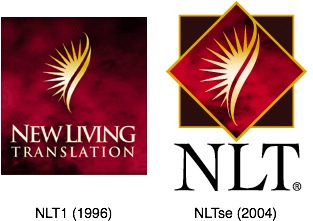
Anyway, I notice now and then when I'm in a bookstore that NLT1 Bibles are still on the shelves, although their numbers are understandably becoming fewer as they are all out of print. Regardless of whether you are looking for a new copy of the NLTse, or if you want to find that specific edition of the NLT1, how can you tell the difference without opening the Bible and looking inside at the copyright page? Well, the answers pretty easy--look at the logo. If you see the squared off logo (shown on the left), it's the NLT1 (1996). If you see the diamond logo (on the right), it's the NLTse (2004).
The Biggest News: We're Expecting

We're now officially paper pregnant as of Friday. Our documents were mailed to China yesterday by the adoption agency. This is known as DTC status (Dossier To China). This would be the equivalent of expecting a baby, because now it's all over but the waiting. To keep up with our progress, be sure to regularly check in at Kathy's blog.
Zondervan Responds to TNIV Open Letter
This afternoon, Tom Dean, (Senior Director of Marketing, BIbles) contacted me asking me to post some very specific and "official" responses to some of the issues I raised in the Open Letter last week.
Positioning
Zondervan is absolutely committed to the long-term growth of the TNIV translation. As an integral part of accomplishing our mission of getting more people to engage the Bible more, we are working to continue to present it to the market thoughtfully and strategically.
However, the NIV is still the most read and most trusted English language Bible translation in the world. We have a detailed strategy for serving the enormous portion of the market that still prefers the NIV over all other translations with new and updated Bibles. In fact, the revenues that come from our NIV titles are what fund our efforts for the TNIV.
Product Mix
In response to the concerns of our retailers, Zondervan is addressing the issue of too many Bible on the bookstore shelves already. Therefore we are very careful in how many new Bibles we launch per year.
We recently launched the TNIV Study Bible as the most comprehensive Study Bible available to address our commitment behind the TNIV. And we launched the biggest new Bible of the year for Zondervan in the TNIV, The Bible Experience Audio New Testament. (www.zondervan.com/thebibleexperience) Soon, we will also be releasing the TNIV Reference Bible specifically for pastors and church leaders.
Many upcoming spring 2007 software releases will also include the TNIV. These include:
• Understanding the Bible Library
• The Teacher’s and Pastor’s Library 6.0
• The Greek and Hebrew Library 6.0
• The Basic Bible Library 6.0
Marketing
When we launched the TNIV translation we spent an enormous amount of resources growing the list of endorsers and media impressions. As we look to future and sustaining the market share and growth of the TNIV, we have transitioned to a more product focused effort in our marketing strategies and tactics.
The result is one of the fastest growing translations in history, already landing at #6 on the best-selling translation list ahead of many translations that have been around for far longer. To date, we have now either sold or distributed more than 1.5 million TNIV Bibles worldwide.
TNIV Website
A significant revision to our TNIV website is currently underway. We are working with a top media company, RELEVANT media group (relevantmagazine.com) to totally revamp our site and make it the most relevant possible for today's generation. Our goal is to go live with the new site by mid-April.
My thanks go out to Tom Dean, Stan Gundry and others for their generous response to my concerns last week. On behalf of myself and This Lamp readers, we look forward to the ongoing conversation and the continued use and acceptance of the TNIV, "the most readable and scholarly accurate translation available today."
Who Said Gambling Is Only for Suckers?
Kathy: I filled out one of those basketball bracket thingies at work today.
Me: [stares}
Kathy: It was only three dollars.
Me: But you don't know anything about the teams.
Kathy: Sure I do. I asked what their colors were.
Me: You filled out a bracket based on the teams' colors?
Kathy: Yes. And if I win, I'll get $54!
Me: You're not going to win.
Kathy: It's okay. I paid in pennies.
Kelland and Henry, you should be ashamed for taking money from
Logos Responds to TNIV Disclaimer
It's odd to me, because no such disclaimers exist for other translations. And note the wording doesn't just say that the TNIV is controversial; it says that it's particularly controversial. What exactly does that mean, anyway?SPECIAL NOTE: We understand, as does the publisher, that the TNIV is a particularly controversial Bible translation. Logos Bible Software does not endorse the TNIV, or any particular modern translation. We believe, though, that it is important to offer this translation in Libronix DLS compatible form for both its critics and supporters, and we would encourage you to look at it, as you would at any translation from the original, with a critical eye. Compare it to other modern translations, and, as you are able, to the original text. You may also wish to visit these two sites for more information supporting and criticizing this translation: http://www.tniv.info and http://www.no-tniv.com.
So last weekend, I took it upon myself to suggest to the fine folks at Logos that they take the disclaimer down. I first clicked on support, and then I clicked on "email support" which created an email addressed to tech@logos.com. Here's what I wrote:
Why is there a disclaimer on the TNIV?
What exactly is controversial about this translation--inclusive language? If this is the case, then why don't you also put the same disclaimer on the NRSV, NLT, the Message, the NCV and any other translation that employed gender inclusive language years before the TNIV.
I would ask you to remove the disclaimer. There's no reason to have it if you aren't going to include it on other translations that follow the same guidelines. It's a double standard and simply says to the customer, "Don't buy this Bible."
Thanks,
Rick Mansfield
Late yesterday, I got a response--and not just from Logos, from from Bob Pritchett himself--the president/CEO of Logos. Looking back at my initial email, I sure sound like I had a saucy attitude Saturday afternoon. I really didn't mean to come across that way. Heck, I thought some guy in Tech Support would receive it. I had no idea it would go all the way to the CEO.
Here's what Bob said (with his permission for me to quote him):
I agree that there are other translations that are similar in many ways to the TNIV; however they simply haven't generated the recent controversy that the TNIV has. (Probably because they either aren't as new, or aren't based on the best-selling modern translation, the NIV, about which people feel very strongly.)
The disclaimer is a response to the amount of controversy, argument, and advocacy (on both sides) we've heard from our users; that's why it links to both a supporting and critical site. If we had this much correspondence on another translation, we'd probably put a note on it, too.
Thanks for taking the time to share your thoughts,
-- Bob
I appreciate Bob responding to the email personally--I really do.
But I still don't understand the need for the disclaimer. I mean, when I bought my electronic copy of the TNIV from Accordance, there was no disclaimer on their site. In fact, on the Accordance site, one reads "The TNIV is an uncompromisingly accurate Bible translation in today’s language from the translators of the most trusted modern English translation, the NIV." However, back on the Logos site, one reads "According to Zondervan, "It combines uncompromising reliability, the clarity of today’s language, and the heritage of the most trusted translation, the NIV" (emphasis added). Kind of a "Well, that's what they say..."
I don't know. Like I said, it's just downright odd. Do we need the electronic equivalent of cigarette health warnings on Bible translations? Can't customers think for themselves? Granted, it's their company and they can put whatever they want on their web pages. But no other software company I know of is doing that. What if Zondervan said, "Well, it's our translation. Take down the disclaimer or not only will we withdraw the TNIV, we might as well withdraw the NIV (the best-selling modern translation), too. Lots of other software companies around."
And I still don't know--even after all this time--what really makes the TNIV controversial, let alone particularly controversial. Sure, it's an update to the NIV, "the best-selling modern translation...about which people feel very strongly." But the International Bible Society has promised that the NIV will be with us at least through the second throne judgement. So it's not like the NIV is in any real danger of being replaced by the TNIV. And as I said in the initial email to Logos, the inclusive language is not new. So what's all the fuss about?
You know, now that I think about it, the only high-profile folks I've ever heard make a real fuss about the TNIV are usually associated in one way or another with one of two other recent translations of the Bible--one of which I really, really like and one of which...well...I really d...
Could such objection to the TNIV be a conflict of interest?
And now that I'm really pondering things, didn't Logos partner last year with the folks from one of those recent translations to produce that...what's it called?....Reverse Interl....
Nevermind.
First Look: The TNIV Reference Bible [UPDATED]
Features:
- Black bonded leather
- 6 1/4 x 9 1/4
- Black letter [yes!]
- Cross references
- Topical/thematic cross references [see bottom of page proofs below]
- Single column text [yes!]
- Concordance
- Maps
Scheduled release: October 2007
Images of actual page proofs [note: keep in mind that this edition is still in the proofreading stage]:
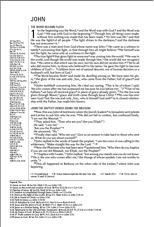
image1.jpg (click on image to see actual size).
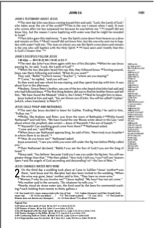
image2.jpg (click on image to see actual size)
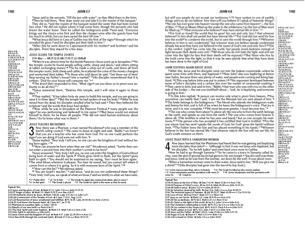
image3.jpg: full page spread (click on image to see actual size)
A primary market for the TNIV Reference Bible is pastors and teachers, but it's optimal for anyone who has been waiting for a basic TNIV reference edition. The price is set at $29.95 which sounds very reasonable for a bonded leather Bible of this size. I'm not sure yet about the actual point size of the text, but as you can see by clicking on one of the images above, it is set with a clear and readable typeface.
The TNIV Reference Bible is already available for pre-order at Amazon.com. When the page becomes available on Zondervan's website, I'll provide a link to that as well.
Zondervan now has a page up for the TNIV Reference Bible. I like the sense of boldness that the marketers have put into the description of this Bible. I'll highlight certain sentences to demonstrate what I mean:
Synopsis:
The complete text of the TNIV—the most readable and scholarly accurate translation available today—in an attractive single-column setting with a full set of cross references. Also includes other convenient study features.
Description:
Perfect for pastors and teachers who have adopted the TNIV translation—it’s just what they requested in a reference bible: single column, full references, black-letter edition.
The TNIV Reference Bible is the perfect TNIV for a more in-depth study of God’s Word. The TNIV is the newest translation of God’s Word with the most up-todate scholarship available today, and is now available in this larger-format, single-column setting.
Because it is easy to read (no study notes or visuals to clutter the page), it is perfect for use anywhere from the college campus to the church auditorium to the airplane seat.
This is the first reference Bible available in the TNIV. The full set of cross references aid in studying the biblical text from Genesis to Revelation, and a helpful set of bottom-of-the-page topical ties creates a topically oriented study path to expand this Bible’s flexibility. A helpful concordance is also included—a must in any reference Bible. This black-letter edition of the TNIV is the best, most comprehensive reference Bible available today.
That's what I call good copy.
The price at Amazon.com now indicates a 34% discount at $19.79, a couple of dollars cheaper than the CBD price of $21.99.
Headlines of the Day
From www.knoe.com:

FYI: "Twin Cities" refers to Monroe and West Monroe, Louisiana.
A P.S. To the TNIV Open Letter: Electronic Editions
Another opportunity for Zondervan and IBS to make an impact is in electronic versions. On the Windows platform, the four major bible software programs appear to be Logos, Bibleworks, e-Sword, and Pradis.
For Logos, most packages of the software (Bible Study Library, Leader's Library, Scholar's Library, Silver Library, Gold Library) include the NIV. However, the TNIV is an extra $40.
For Bibleworks, the NIV is included but the TNIV is not available.
For e-Sword, neither the NIV nor the TNIV is officially available, however, other competing translations (such as the ESV) are included for free.
For Pradis, a library sold by Zondervan, the NIV is included in virtually every package, but the TNIV is not included in every package.
It would be wonderful if Zondervan and the IBS could work with electronic publishers to make the TNIV available on an attractive basis to those who use electronic packages. Even if this is not possible, perhaps Zondervan and IBS could work with electronic publishers to remove comments that suggest that Zondervan recommends AGAINST the TNIV: for example, the comment on Logos's page that says
"We understand, as does the publisher, that the TNIV is a particularly controversial Bible translation." (emphasis added)
http://www.logos.com/products/details/2429
Incidentally, I sent an email to Logos over the weekend suggesting they remove the disclaimer found at the link above. In my opinion it is a double standard because the TNIV is no more controversial than the NRSV, NLT, Message, or NCV which Logos also sells, and no such disclaimer appears with these products. Others reading this may be interested to voice your concern about this double standard to Logos as well.
Zondervan would do well to ensure that the TNIV is on par with the NIV in Bible software offerings--especially in the ones that they publish. By neglecting the TNIV in Pradis packages, Zondervan continues to send mixed signals regarding its support for the TNIV.
On a positive note, on the Mac side of things, the TNIV seems to get better placement. It is part of the Zondervan Essential Bible Study Suite for Macintosh, (glad to know it's considered essential). It is also part of the Zondervan Personal Growth Bible Study Suite for Macintosh (and the NIV is not!). Both of these collections run in Accordance. Zondervan controls the content of these packages, not Oak Tree Software, the makers of Accordance. The TNIV Bible with notes is also available as a separate individual Accordance module for $30.
Kathy's Right to the Point Movie Reviews
The Illusionist
The Prestige
Borat
Norbit
Ghost Rider
And later next week, check back here for my review of 300, which I saw last night.
An ESV Apocrypha??
There's a very cryptic message on Crossway's ESV FAQ page:
Will there be an edition that includes the Apocrypha?
Crossway Bibles won’t be publishing an edition with the Apocrypha, but another publisher may. As we learn more, we will post it here.
Wow. Another publisher may. I have no idea how long this information has been on the FAQ page, or perhaps if it's always been there.
Until the 19th century, most, if not all Protestant translations included the Apocrypha, usually in a separate section between the Testaments. The Apocrypha is indispensable for understanding the cultural setting of the New Testament, although the large majority of Protestants do not consider these books canonical.
I'm intrigued by the idea of an ESV Apocrypha because I simply would not have expected it from the team behind the ESV. However, the ESV is based upon the old RSV which included these extra OT books, so this is certainly not outside the realm of possibilities. And such a decision is not without precedent. Not too long ago the publishers of another evangelical version, the New Living Translation, quietly introduced an edition with the apocryphal/deuterocanonical books.
On a related note, recently, I made the suggestion that we need a TNIV Apocrypha.
Nevertheless, interesting stuff. If anyone knows anything specific about an ESV Apocrypha in the works, be sure to let us know.
HT: Larry
Rock the Casbah
They've been playing eighties music the whole afternoon, which I really like since I was in high school from 1982 to 1986.
Earlier when I bought my coffee and a scone, this was the conversation I had with the guy behind the counter (who evidently is younger than me).
ME: "I like that song, 'Rock the Casbah.' It reminds me of a high school dance."
Guy behind the counter: [thinks for a few seconds, listening to the song]: "Yeah, I can picture that. Like in a movie or something."
ME: "No. They used to play that at my high school dances."
Guy behind the counter: [stares]
Now Shipping: Kohlenberger's Comparative Psalter

Here is the description from the Oxford University Press website:
The Book of Psalms has occupied a central place in Jewish and Christian worship for millennia. This authoritative volume brings together the Psalms in a quartet of versions that is certain to be an invaluable resource for students of this core book of the Bible. The texts featured in A Comparative Psalter represent a progression of the text through time. The ancient Masoretic Hebrew and Revised Standard Version Bible are displayed on one page, while the New English Translation of the Septuagint and Greek Septuagint are on the facing page. The same set of verses is displayed for all four texts, making it easy to compare have rendered The Modern English versions included in this volume are noteworthy for their fidelity to the ancient texts. The first major translation of the Christian Scriptures from the original languages to be undertaken since the King James Version, the RSV debuted in 1952 to critical acclaim. It dramatically shaped the course of English Bible translation work in the latter half of the Twentieth Century, and remains the Bible of choice for many people. Meanwhile, the New English Translation of the Septuagint is the first work of its kind in a century and a half. This major project brings to the fore a wealth of textual discoveries that help illuminate the Book of Psalms for Twenty-first Century readers.
Readers should note that the New English Translation of the Septuagint (NETS) is a completely different translation from the NET Bible of Bible.org (although the similar names are bound to create continued confusion).
Also, I find it interesting that the RSV was chosen over the NRSV for this volume. I wonder if the RSV is more acceptable to some markets than the NRSV--perhaps the Jewish community? Or perhaps the retention of archaic forms for addressing deity (i.e. thee and thou) without resorting to the KJV was the goal. Nevertheless, Kohlenberger remains king of the comparative texts (an excellent way to study from my perspective).
Look for a review of this volume in an upcoming blog entry. Readers may also be interested in my review of Kohlenberger's Parallel Apocrypha.
HT: Larry in earlier comments.
An Open Letter to Zondervan and the International Bible Society Regarding the Promotion of the TNIV
I suppose that normally when you receive a complaint from someone regarding the Today's New International Version Bible, it's on unfriendly terms from those who are hostile to the translation. It is very important to me that you understand that is not the case with this correspondence from me today. Personally, I believe that the TNIV is one of the most accurate translations on the market today. I reject the suggestion by some that the TNIV is a liberal, feminist, or politically correct translation. In my opinion the TNIV is a conservative, Evangelical translation that accurately represents the message of the original language texts in a style of English that is contemporary and easily communicable to modern readers.
Further, I regularly study, teach and even occasionally preach from the TNIV. I have explored and defended translational decisions regarding the TNIV in numerous posts on this blog. I have actively sought out other websites that spread misinformation about the TNIV in an effort to set the record straight whenever I am able. The reaction by some in the evangelical community to the TNIV have, in my opinion, often been misleading and at the very least uncharitable. Currently the TNIV is only one of three translations I recommend to people who ask my suggestion for a good primary Bible version to use (the other two are the New Living Translation and the Holman Christian Standard Bible). In other words, I fully support, endorse, and even promote the TNIV.
But I also have concern for what I perceive as a lack of attention (or at least not enough attention) in the promotion of the TNIV by Zondervan and to a lesser extent, the International Bible Society. This is not a new issue. I've had a number of private correspondences with employees at Zondervan and the IBS. Often the issue seems somewhat settled with promises of upcoming promotion or updates to information on the TNIV website that often never materializes. Although I have been assured a number of times over that you are completely committed to the TNIV, for some reason, these issues continue to gain my notice.
The most recent example, and the event that has prompted this particular open letter, is concern from a pastor who might be willing to make the TNIV the official Bible for his congregation but is concerned that the TNIV may not be around in five years. He has posted his concerns in the comments of a post at the Better Bibles Blog in which he writes:
[I]s this translation going to make it? Zondervan and IBS are taking such a tremendous amount of heat, I don't see Zondervan pushing this like they did the NIV. I emailed asking about a wide margin TNIV (other than that squared one they have) and they said they have no plans for one, even though they have a NIV and NASB wide margin Bible.
If I switch us to TNIV and then Zondervan doesn't support it, am I getting into something that won't be here five years from now...?
Incidentally, the other translation this pastor is considering adopting for his church is the English Standard Version. Honestly, I have no doubt that the ESV will be around five years from now because of the excellent marketing from Crossway. And if you really press me, I have no doubt that the TNIV will be around in five years as well, but sometimes I wonder at what level it will be around. I mean technically, even J. B. Phillips' New Testament in Modern English is still around, but it's not a major voice in Bible translations. And although I have received numerous reassurances from Zondervan about your commitment to the TNIV, I have to wonder why this issue keeps getting brought up.
Before I voice the specifics of my concerns, I should note a number of positive developments that I have observed.
First, I suppose we should all remember that the TNIV has really only been out in complete form for less than two years. In that time, despite serious campaigns to thwart its acceptance (unlike anything perhaps since the release of the RSV in 1952), the TNIV first hit the CBA top ten Bible version rankings in about a year and a half's time. That should be compared with the English Standard Version which took almost four years to see a spot in the top ten. Bible translations often take years to truly find widespread acceptance. In terms of translation adoption, the TNIV is really only in its infancy.
Second, two extremely significant editions of the TNIV were released last year: the TNIV Study Bible and the Bible Experience audio Bible. From my perspective, the TNIV Study Bible goes a long way toward demonstrating Zondervan's long term commitment to this translation. The Bible Experience has taken the TNIV to new markets and has been widely praised by its reviewers, some of whom weren't necessarily supporters of the TNIV in general.
Third, as I reported on my blog a couple of weeks ago, the TNIV has replaced the RSV in the new second edition of Wayne Meeks' Writings of St. Paul demonstrating its academic value and acceptance beyond the realm of the Evangelical world.
Fourth, I have begun to see more shelf space devoted to the TNIV in both secular and Christian book stores.
But in spite of the above developments, I still have some concerns about the way the TNIV is being promoted, or rather, my concern is that the TNIV is not being supported well enough. I have categorized my concerns under four broad categories.
Internet Promotion. First, in an internet age, the attention devoted to keeping the TNIV website up to date frankly just stinks. TNIV.com, a Zondervan website for the version, has not been significantly updated in probably two years. And it's not that it's just been neglected, it's like a neglected house that is starting to fall apart. The most significant neglect is on the products page, promoted on the home page as supposedly being "the complete TNIV line-up." It's not. In fact, it hasn't been updated since it was first created as far as I can tell. On this page, the visitor will find no mention of the TNIV Study Bible. the Bible Experience, or the recently released College Devotional Bible. And to make matters even worse, upon a recent visit, I discovered that now there are graphics which are missing and do not load. And all the bizarre white space at the bottom of the products page make it look like a middle schooler's first attempt at a website.
I wouldn't dream of recommending TNIV.com to a person who is interested in the TNIV. In fact, a while back a Zondervan employee suggested that all such interests be directed to the main Zondervan site where all the current editions of the TNIV are listed. The problem with this is that the Zondervan website doesn't work well with any browser other than the six-year-old Internet Explorer 6, and it hardly works at all for Mac users running the native Safari web browser--but I suppose the main Zondervan website is a separate issue.
Months ago--last summer, in fact--I was told that an update to TNIV.com was forthcoming, that it was a project in progress at Zondervan. What happened? In the meantime, Harper Bibles, part of the same company that also owns Zondervan, has just launched a brand new site devoted to the NRSV. They've even got a podcast! And this, after I was told that the NRSV had such declining sales that it was barely even on publishers' radar anymore.
The IBS site, TNIV.info, fares somewhat better as it is an attractive repository of information about the TNIV including reviews, scholarly articles (although no new ones in a while), explanation of questioned passages, information about translators and more. But completely missing in action is the once frequently updated TNIV Blog. Since December, 2005, the TNIV blog has only been updated twice--once in October and once in November of 2006. And now, as far as I can tell, all links from other pages on TNIV.info to the TNIV Blog have been removed. If a visitor doesn't know the address or can't find it in a search engine, he or she will not be able to find it all, but maybe that's by design.
Now, I understand that employees at a company like Zondervan are busy and juggle many responsibilities. But falling behind on keeping the TNIV website up to date seems vastly different from simply abandoning it which is what it's beginning to look like. I assume that Zondervan is a much larger company, but you could really take a lesson from Crossway's website for the ESV. Their product page is always up-to-date, and their blog is second to none. I would suggest that the ESV website is the hands down best Bible version promotional website in existence. Tyndale's NLT website is a very close second, but they should really add a blog.
Neglect of Grassroot Support. This is another place where Zondervan could learn from Crossway. Their ESV blog is quite useful for highlighting how the translation is being used among individuals and churches. They even have a page of buttons and web badges for ESV users to put on their websites. I come across these on personal sites and blogs all the time. How come Zondervan doesn't provide such things for the TNIV?
But on a more serious level, I have tried to help Zondervan and IBS out in the promotion of the TNIV on a number of occasions, and after receiving initial response, nothing ever happens. Let me give some specific examples. After strongly trying to encourage IBS to continue the TNIV blog (including suggesting entry topics), I contacted both IBS and Zondervan offering to write a TNIV blog for either organization. I was willing to completely ghostwrite the blog anonymously, focusing on features of the translation, differences from the NIV, spotlights on translators and the like. From IBS, I didn't even receive as much as a "No, thank you." The folks at Zondervan seemed to take the idea seriously at first, though. I was told that my suggestion for a new Zondervan sponsored TNIV blog had been discussed in one of their meetings. They said they were open to my contributing to such a blog. Then I was told that a specific person at Zondervan would be in touch with me the following week to see about getting the process rolling, but I never heard anything more about it. That was about three or four months ago. I was willing to do all this for free, mind you.
Another situation is even more puzzling. As I said before, the concerns expressed here have come up from time to time. About five months ago, they had come up again, and an employee at Zondervan specifically contacted three of us who support the TNIV in response to an online conversation. Toward the end of his well-written response to the three of us, he included this offer:
I wanted to let you know that in the next day or so, we’re going to have audio and video clips of The Bible Experience available for people to post on their websites, blogs, etc. This includes a 60-second video trailer, an 8-minute “behind-the-scenes” video, and 4-5 different audio clips from the New Testament. If you’re interested in posting any of these to your blogs, I’d be happy to help make that happen.
Two of the three of us said we were interested. In response, we were told,
I’m going to ask [name withheld] to get in touch with you about posting the audio and video clips to your site. Since [this person is] on the marketing side of things, [this person] probably can help you out better than I can. In any case, thanks for being willing to put them up on your website.
And then neither one of us heard anything. Ever. You know, I thought this was a great idea. Here we had been concerned about the perceived neglect of marketing of the TNIV, so we were invited to help out. Both of us agreed to this person's offer, and then it never happened. I realize that people get busy and things fall through the cracks, but we're trying to help promote the TNIV--on a volunteer basis, no less--with free promotion and advertising--simply because we believe in this translation. I realize that This Lamp isn't THE most frequented site on the internet, but 250 hits a day isn't too shabby considering your average person with a family blog only gets about a dozen hits a day.
Lack of Professional Editions. I understand that supposedly the TNIV was initially aimed toward 18 to 34 year olds, but there's a large market beyond this demographic that will read and use the TNIV (I'm 39, by the way). In fact, anyone reading the NIV should be a potential target market for the TNIV. On a readability level, there's no real difference between the two. My biggest initial concern was simply finding an edition of the TNIV with a cover that didn't attract attention to itself (which I finally did). Now, I'm concerned that other than the TNIV Study Bible, I still can't purchase a reference edition or an edition with wider margins for notes. In my opinion, strictly targeting younger markets is too narrow of a focus. I need a copy of the TNIV which I can teach and preach from, one that I can write my own notes in. I realize that wide margin Bibles don't sell as well as other editions, but those who use wide margin Bibles often have influence over individuals who will be purchasing Bibles and what translations they choose. I regularly get asked from people in my classes what Bible I'm using. I seriously need a good edition of the TNIV in which I can add my own notes and use as the same Bible for both personal study and public use. I would at least suggest a limited/seasonal run of this kind of edition. Again, the market for those who use these editions might be smaller, but we influence the translation choice of the larger group.
Cannibalization. I know this is a taboo subject, and I also realize that of everything I've suggested here, that this will be the least considered. But the biggest barrier to the TNIV's acceptance is not its detractors; rather, it's the NIV. Frankly, I'm skeptical that the TNIV will ever gain widespread acceptance as long as the NIV remains in general use. This is a case where Tyndale really made all the right moves in the transition from the old Living Bible paraphrase to the New Living Translation. Before the NLT was launched in 1996, the old Living Bible was available in much more than the standard green hardback. There were reference editions, children's editions, and study editions--including the Life Application Study Bible. But in order for the NLT to be a success, Tyndale phased out every edition except the old green hardback which is still available today. I'm sure this may have even caused some financial problems initially, but today the NLT usually ranks the 4th or 5th spot on the CBA chart.
Zondervan could learn a lot from Tyndale on this issue. I fully understand the commitments that were made a decade ago to keep the NIV in print in response to the controversy over the NIVi. However, Zondervan could stay true to that promise and simply keep the old standard brown NIV hardback in print, and let every other edition transition to the TNIV. Yes, there would be some money lost initially, but as Tyndale has shown with the NLT, these things work themselves out.
The NIV has a wonderful and proud legacy. I am truly thankful for its place in translation history as the first contemporary language version to dethrone the old KJV. My fear, however, is that in 200 years, the NIV will still be the dominant Protestant translation. It's time to make the hard move and retire the NIV. The NIV came along at a time when it was fairly unique among translations. There are so many translations now that the TNIV, although a better translation than the NIV, has less secure footing.
I have no illusion that this will actually happen, but I thought I'd say it anyway.
In addition to the above issues being addressed, I would also like to see more aggressive marketing of the TNIV, especially the use of some of its better known endorsers. When detractors of the TNIV start listing high profile evangelical leaders who do not like the translation, I often surprise them by countering with the fact that individuals such as D. A. Carson and Timothy George endorse the TNIV. Or I'll mention that Douglas Moo was one of the translators. That kind of information often takes opponents of the TNIV by surprise. Granted, endorsers don't really have any direct connection as to how well a translation communicates the message of the original biblical texts, but I've found that such endorsements will often make someone opposed to the TNIV open to take an actual look at it. I would love to see advertisements with the gentlemen I've mentioned here, as well as others listed online in ads in such places as Christianity Today and other high profile advertising space. I believe such testimonials would go a long way toward creating more open minds.
I hope that you will take this letter as I intend it--an expression not just of concern, but of suggestions from a supporter of the TNIV. I would welcome any representatives of Zondervan or IBS to respond in the comments on this blog entry and join in with the conversation among the visitors to my site. I've said over and over that the TNIV is a highly accurate translation and a better representation of the original texts than its predecessor. I would hope to use it for the next decade or two, but I don't want to be alone in doing so.
Humbly,
Rick Mansfield
Be sure to read the PS to this open letter as well.
Works vs. Faith: Take Your Pick
(Surah 7:8-9, The Koran)
“God saved you by his grace when you believed. And you can’t take credit for this; it is a gift from God. Salvation is not a reward for the good things we have done, so none of us can boast about it.”
(Ephesians 2:8-9, The Bible, New Living Translation.)
The Problem with Borat
Whatever.
Last night Kathy and I rented Borat. The advertisements make it look quite funny and very clever. How will American people react to a "foreigner" who is culturally and socially naive to our assumed social norms? Now we should have known better. We knew that it was Rated R, but we thought.... well, I don't know what we thought. We just should have known better. We watched quite more than we should have and finally stopped the movie after viewing part of what had to have been the crudest scene I've ever seen in a mainstream movie (and, yes, Borat would have to be considered mainstream with the backing of 20th Century Fox).
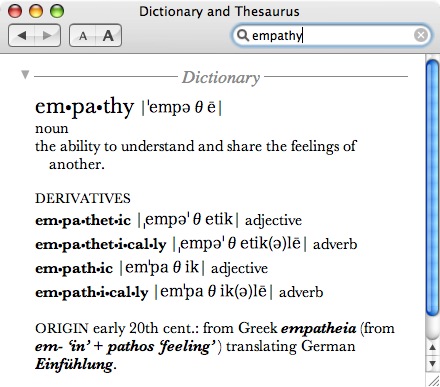

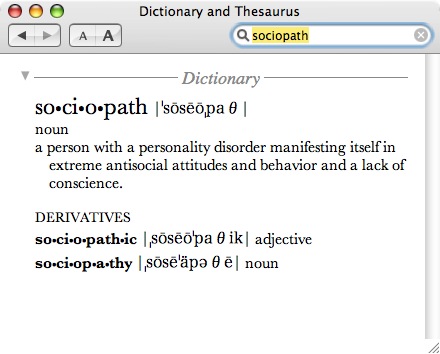
Granted, Cohen is a master at bringing out America's deep-rooted prejudices that sadly still exist among some individuals in our country. But not all of his targets reflect this, and frankly I feel sorry for them. Maybe it's easier to laugh at a racist making an idiot out of himself, but does that make it right? And even though we in the audience are in on the gag, are Cohen's feigned racist statements really fodder for comedic material? Do we go ahead and laugh at racism and prejudice if we know the person saying it doesn't really mean it? Does that make it any less of an issue?
One particular scene involved Borat at a very proper, Southern, dinner party. This scene has been shown on television quite a bit. What I didn't know until viewing part of the movie is that the gentleman sitting at the right end of the table is a minister. Even after Borat rudely insults his wife, he acts annoyed, but charitable (much more so than I imagine I would have). The final straw for him is when the prostitute arrives to the party whom Borat has invited. Oh, I know that some might criticize and remind us that Jesus was not afraid to socialize with "sinners" of all varieties. But Jesus, although often set up to look bad by his enemies, never found himself in no win situations. At the dinner party, no one was going to win anything other than Cohen who was orchestrating the entire event. In reality, I was impressed that the minister never said an unkind word. He simply stood up and said something to the effect of "It was nice to meet you, but I must be excused now."
After watching a few minutes more, Kathy and I came to the same conclusion.
A Mac for 100 Grand?!

The mysterious "Product 7" is listed at Amazon.com as a computer made by Apple, Inc.
It gets five stars based on two separate reviews, and according to Amazon, it will be "in stock soon."
Shipping is free--as it should be for any computer that cost $99,999!
Seriously, I have no doubt that it's a hoax, but it's been on Amazon's site since the end of 2005! Since Ryan Jordan is looking for work, maybe he can be Amazon's new product reality checker.
Wikipedia Watch: Editor Who Posed As Professor Is Kentucky Dropout

Above Cartoon by Peter Steiner. The New Yorker, July 5, 1993 issue (Vol.69, no. 20) page 61
From today's Courier Journal (Louisville, Kentucky):
He touted himself as a tenured professor with doctorates in theology and canon law.
But the volunteer editor and fact checker for the free online encyclopedia Wikipedia turned out to be a 24-year-old dropout from Centre College and Lexington Community College.
In a long feature last July, The New Yorker described how Ryan Jordan -- identified online and in the magazine article as Essjay -- was renowned for rooting out errors and obscenity from Wikipedia, whose entries are contributed and corrected by readers and volunteer editors.
Last week, however, after Jordan's credentials were exposed as fictitious, the magazine ran a correction -- and yesterday Jordan, who had written or edited about 16,000 entries, resigned.
Wikipedia has said no questions have been raised about the accuracy of his work.
Critics of Wikipedia said the deception was fitting, given the site's history of errors that include reporting that the prime minister of Norway was a pedophile.
Devoted contributors, including Louisville computer programmer Steve Magruder, who has written many entries about the city, said they feared Essjay's deceptions could damage the encyclopedia's credibility. [Rick chuckles..."You think?"]
Another Wikipedian, as they call themselves, denounced Jordan last week on the site, saying: "I hope you understand how you are –––– all over the thousands of people who have made a real effort to turn Wikipedia into a credible source."
Responding on his Wikipedia page, Jordan initially defended his deceptions by saying he had to protect himself from online stalkers. He told The New Yorker he routinely got death threats from people he banned from the site.
Wikipedia's co-founder, Jimmy Wales, also said at first on the site that he had no problem with Jordan's invented persona.
But yesterday, Wales asked for Jordan's resignation.
Read the entire article by Andrew Wolfson.
Ahh... the democratization of knowledge...
You know the issue is not that Jordan is a dropout. There are lots of intelligent, well-educated, successful folks who never finished college (consider Bill Gates, Steve Jobs, and many of my friends and family). No, the fact that Jordan is a dropout only adds to the irony that he was impersonating a tenured professor with multiple doctorates. And this adds to the growing concern from myself and others regarding the use of the Wikipedia as a serious source of information (I think it's great for pop-culture references).
And even if Jordan's work was 100% accurate, his subterfuge calls everything he's written/edited on the Wikipedia into question. Someone will have to go behind him to verify his work. He was responsible for cleaning up the nonsense that any bozo can add/edit on the Wikipedia. But you'd think they at least check out the checkers!
I can guarantee this wouldn't happen at Britannica.com...
Bible Version Cage Match Coming Soon
New Living Translation vs. Contemporary English Version
Check this space later in the week.
In the meantime, be sure to read round one over at Lingamish.
Biblical Illustrator Spring 2007
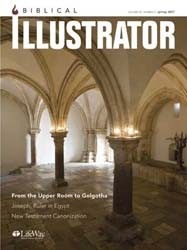
Biblical Illustrator is a resource anyone can use, however --even those who are not directly involved in these studies. The magazine itself has about twenty new articles each quarter, but the real goldmine of information is found on the CD which will add another seventy or so articles from past issues. These articles are in Adobe PDF format with full color (in most cases) pictures from archaeological digs or landscapes from biblical sites. Although the CD comes with a Macromedia-based graphical interface for accessing the articles according to lesson date, I tend to copy all of the PDF's over to my hard drive and then sort them by book of the BIble. Carrying them around with me on my laptop gives me quick access to information if I am working on a lesson or sermon, regardless of the curriculum context in which they were originally written.
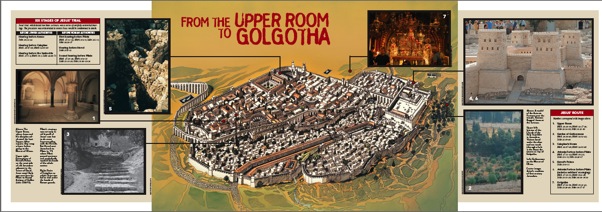
Spring 2007 New Articles:
"Village, Town or City" by G. Al Wright, Jr. (John 11:1-44)
"Peter's Eschatological Understanding" by Mark R. Dunn (1 Pet 4:7-19; 2 Pet 3:1-18)
"New Testament Canonization" by William Warren (2 Pet 3:1-18)
"Meekness: A Word Study" by Bill Patterson (Gal 5:13 - 6:5; Col 3:12-17)
"Joseph: Ruler in Egypt" by Harold R. Moseley (Gen 50:15-21)
"The Reality of Jesus' Resurrection" by Jerry Batson (Luke 24:1-49)
"With a Voice of Singing: Hymns in the Early Church" by Becky Lombard (Phil 2:5-11; Col 3:12-17).
"The Holy Mountain" by Lynn O. Traylor (2 Pet 1:12-21)
"Deserving of Death: Stoning in the Old Testament" by T. Van McClain (John 8:2-47)
"Cappadocia in the First Century" by Alan Ray Beuscher (1 Pet 1:1-12)
"All Your Conduct" by Terry Ellis (1 and 2 Peter)
"First Century Clothing" by Roberta Jones (1 Peter 3:1-12)
"First Century Teaching Practices" by Norma S. Hedin (John 8:2-47; 11:1-44; 13 - 19)
"Of Spices and Perfumes" by Argile A. Smith, Jr. (Jhn 18:1 - 19:42)
"Simon Peter: the Man and His Ministry" by Bobby Kelly (1 & 2 Peter)
"Signs in the Gospel of John" by Robert E. Jones (John 9:1-41; 11:1-44)
"The Role of a Steward" by Terry L. Wilder (1 Peter 4:7-19)
"The Pool of Siloam" by Stephen M. Ortiz (John 9:1-41)
"Peter's Use of Word Pictures" by Gregory T. Pouncy (1 & 2 Peter)
Book Review: George W.. Knight, The Illustrated Everyday Bible Companion. Reviewed by Jerry M. Windsor
ARTIfacts: "Gezer: A Sleeping Giant"
"From the Upper Room to Golgotha" --center spread (see above; John 13-19)
Articles from Previous Issues
"Where Jesus Ascended" by Lynn O. Traylor (Luke 24:1-53; Acts 1)
"The Riddle of Suffering" by Curtis Kent Horn, Jr (John 9:1-41)
"Raising Lazarus" by Bob Simmons (John 11:1-57)
"Describing the Enemy" by Lynn O. Traylor (John 10:1-42)
"Andrew: Just Peter's Brother?" by Steve Lemke (John 6:1-59)
"Passover in the First Century" by Robert Earl Jones (John 13; 14)
"Jesus' Last Week: Map and Chart"
"The Mount of Transfiguration" by Glen McCoy (Matt 17:1-13)
"Peter, Babylon, and Rome" by E. Randy Richards (1 Pet 1:1-12)
"Gnosticism" by Cecil Ray Taylor (1 John 3:1-5, 9-18)
"Faith Affirmed" by Timothy Trammell (1 John 5:1-12)
"Euodia and Syntyche" by Buelah Thigpen (Phil 4:2, 4-13, 16-19)
"The Life Situation and Purpose of 1 Peter" by Garland R. Young (1 Peter)
"Pilate's Power and Authority" by Sharon H. Gritz (Matt 28)
"The Background of Jesus' Covenant" by David E. Lanier (Matt 26:26-29)
"Peter's Messages" by Jerry N. Barlow (Acts 2; 3; 4; 5 10; 15)
"Women in Jesus' Ministry" by Julie Nall Knowles (Mark 15:40-41; John 20:1-18)
"First Century Women's Dress" by Mona Steward (1 Pet 3:1-12)
"Joseph and His Brothers" by Ken Cox, Jr. (Gen 50:15-21)
"Freedom and the Christian" by Larry McGraw (Matt 18:15-17; Gal 5:13-15; 6: 1-5)
"The Meaning of Violence" by Jerry McGraw (Gen 6:11-13; Ps 55:9-11; Jon 3:6-10; 1 Pet 3:9-12)
"God's Revelation in the Sinaitic Covenant" by Jerry W. Lee (Ps 99:9; Ex 19:1-12, 16, 18a; 1 Pet 1:13-16)
"Jesus and Peter--Peter's Use of Jesus' Teaching in His Letters" by Timothy Trammell (1 & 2 Peter)
"Sin, Iniquity, Transgression: What's the Difference" by John T. Bunn (Ps 51:1-2)
"Wine in the Roman World" by W. Murray Severance (1 Pet 4:3)
"Rome's Political System in the First Century" by Harold S. Songer (1 Pet 2:13-14)
"The New Testament Concept of Covenant" by Robert M. Shurden (1 Peter 2:9-10)
"Peter's Use of the Old Testament" by C. Alan Woodward (1 Peter)
"Aliens: A Study of Two Words" by James Wiles (1 Pet 1:1-12)
"Paul vs. Peter" by Mack Roark (Gal 2:1-21)
"A Christian Ethic of Business" by Paul N. Jackson (James 4:1-17)
"The Servant-Christ" by Bob Evans (Phil 2:1-13)
"Tetelestai" by Bennie R. Crockett Jr. (John 19:16-18, 28-30; 20:11-18)
"Jesus the Teacher" by Robert J. Dean (John 13:1-17)
"Jesus' Post-Resurrection Appearances" by Tony Tench (Luke 24:13-21a, 27, 30-35)
"Counselor: The Meaning" by Mark R. Dunn (John 14:15-31; 15:26-27; 16:5-15)
"Early Christian Eschatology" by Lynn Jones (1 Pet 4:7; 2 Pet 3:3)
"The Holy Spirit: A History of Interpretation" by Mikeal C. Parsons (Rom 5:5)
"Liberty" by Elmer L. Gray (Gal 5:13)
"The Early Church's Use of Messianic Passages" by Thomas D. Lea (Isa 53; Acts 28:23)
"Beams and Motes" by L. Milton Hankins (Matt 7:1-12)
"The Reality of Jesus' Resurrection" by Terry Ellis (Luke 23:24)
"Lazarus: All We Know" by D. Paul Smith (John 11:1)
"Pharisee!" by Dennis J. Horton (Luke 16:14; 18:10; John 9:40)
"Jesus' Use of Allegory" by Larry V. Crutchfield (John 10:9, 14)
"The Life of Simon Peter" by John Polhill (Luke 9:20)
"Judas Iscariot" All We Know" by Vernon O. Elmore (Luke 22:3; John 12:4)
"Hypocrite" by Elmer L. Gray (Matt 6:2)
"Herod Antipas: The Builder and Ruler" by Timothy N. Boyd (Luke 23:1-56)
"Slaves in First Century Israel" by R. Garland Young (John 15:1-17)
"A History of Footwashing" by Gary M. Poulton (John 13)
"Eyewitness Accounts in the New Testament" by Gary Hardin (2 Pet 1:12-21)
"The Counselor" by Bob Dean (John 14; 15; 16)
"The Spirit World in the First Century" by Paul N. Jackson (2 Pet 2:10b-11; col 2:18-19)
"Prayer: A Word Study" by Fred Howard (Ps 28:6-7; Col 4:2-4; 1 Thess 5:16-18; 1 Pet 5:6-7)
"Who Was the Adulterer?" by Rick Byargeon (Ex 20:14)
"Teachers in the First Century Church" by Bob Dean (Gal 6:1-10)
"Egyptian Culture in Joseph's Time" by Janice Meier (Gen 37:2-4, 26-28; 50:15-21)
"The Covenant with Israel" by Thomas J. Delaughter (Ex 19:4-6)
"The Meaning of Truth" by Terry Ellis (John 14:15-26; 16:5-15)
"The Meaning of Joy" by Kendell H. Easley (Phil 1:18 - 4:19)
"Idolatry in Colossians" by R. Garland Young (Col 3:1-17)
"Son of Man in John's Gospel" by Argile R. Smith, Jr. (John 1:19-51; 3; 5-6; 8-9; 12)
"Introducing John's Gospel" by Leslie Thomas Strong (John 1:1-18)
"The Feast of Dedication" by Elias Coye Still, III (John 10)
"Bethany" by William B. Tolar (John 11)
"Philip's and Peter's Missionary Work" (Acts 6:1 - 8:40)
"Peter's Miracles" by Charles W. Draper (Acts 3; 4; 5; 12)
"Controversy and Response" by C. Mack Roark (Acts 15:1-35)
The Biblical Illustrator Plus CD also contains an audio/video interview with SBTS professor, T. J. Betts regarding his recent participation in an archaeological dig in Hazor.

The cover of Biblical Illustrator contains the image above described internally as the "Traditional site of the Upper Room in Jerusalem, which was restored in the 14th century. The stone flooring is possibly, for the most part from the original flooring.
Subscriptions for Biblical Illustrator magazine ($24.95/4 issues) and Biblical Illustrator Plus CD ($34.35/4 discs) are available from the Lifeway website.
New Look

Incidentally, for those of you who are curious about such things, I edit this website using RapidWeaver, and this particular theme is called "My Desktop," which I obtained from Multithemes.
UPDATE 3/3: Based on comments, I've widened the main body. I've also tried to streamline subpages. The Multithemes came with .png objects that could be dropped into place. It's nifty to have that ability, but the stuff scattered around the borders may be a bit much. I'll see if it grows on me.
UPDATE 3/5: Okay, I've removed the .png objects and tried to do some basic cleanup. If everything looks okay after this next publish (which means you're reading this), I'll leave it alone at least for a while. I still may move the site to iWeb if the forthcoming v. 2.0 does everything I want it to do.









